Villages and Hot Springs in Bajawa Posted by sasha on Jul 11, 2016 in Uncategorized
From the sleepy capital of Ende, we continued on our journey across Flores to the town of Bajawa. Located at 1,100 meters above sea level, the cool air of Bajawa is a nice respite from the stifling heat of the lowlands. Although the town isn’t much, the surroundings are well worth exploring. With traditional Ngada villages, hot springs, and a few volcanoes, there’s enough to keep you busy for a couple of days.
Where to Stay
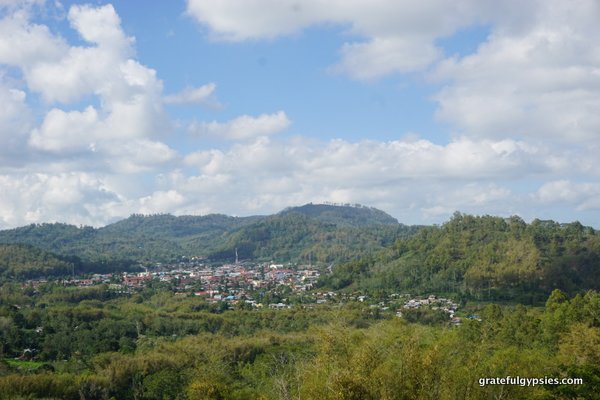
Bajawa from a distance.
Where you stay in Bajawa depends on how you get there. If you’re riding the trans-Flores buses, you’ll probably want to get a room in one of the handful of guesthouses in the center of town. If you’ve got a driver and are a bit more mobile, there are also a few places outside of town that might be a little cheaper. As is the case with much of Flores, accommodation is overpriced and underwhelming.
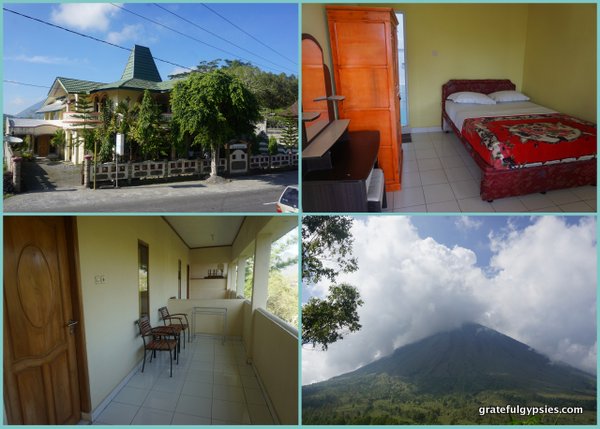
Home for the night.
Based on our driver’s recommendation, we ended up at one of the places outside of town. They were nice enough to set up a triple room for us, it included breakfast, and there were great views from the balcony of Gunung Inerie off in the distance. The name is escaping me, but seeing as how there’s only one main road in and out of town you could probably find it just based on the pictures.
Ngada Villages

Wogo village panorama.
Bajawa is the capital of the of the Ngada District of Flores, and the local people here speak a distinct dialect – it’s so different from Bahasa Indonesia and other dialects in Flores that our driver said he couldn’t understand any of it. Indigenous animist religions are still practiced here, and villages are still full of traditional Ngada houses. There are quite a few villages that are easily visited from town, but the two most popular are definitely Wogo and Bena.
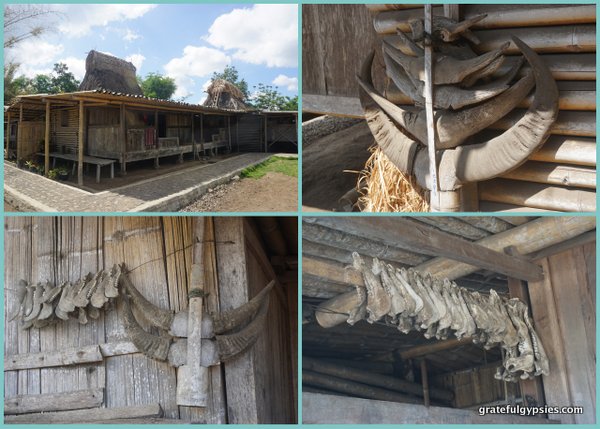
Interesting decorations.
One of the first things you’ll notice when exploring the Ngada villages are their unique decorations – people hang buffalo horns and pig jaws outside of their houses. These signify how many sacrifices have taken place in the household, a representation of the family’s wealth.
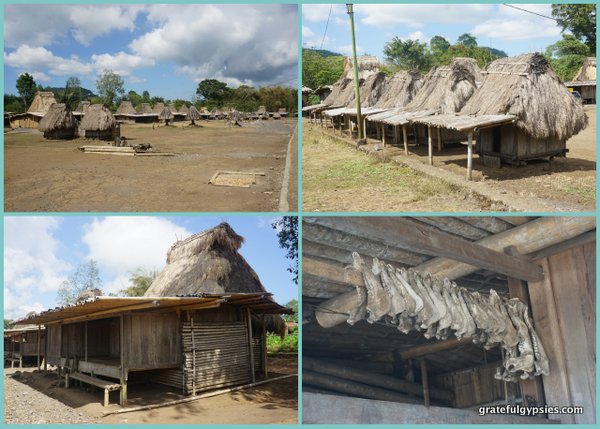
More shots of Wogo.
It always feels a bit odd to me when I visit places like this. On the one hand, the villagers are very welcoming – especially since you’re required to sign a guestbook and make a donation – but at the same time, it seems a bit strange wandering through a village and peeking into people’s houses. The people don’t seem to mind the attention, though, and far fewer tourists make it here than other spots in Flores due to its remote location.
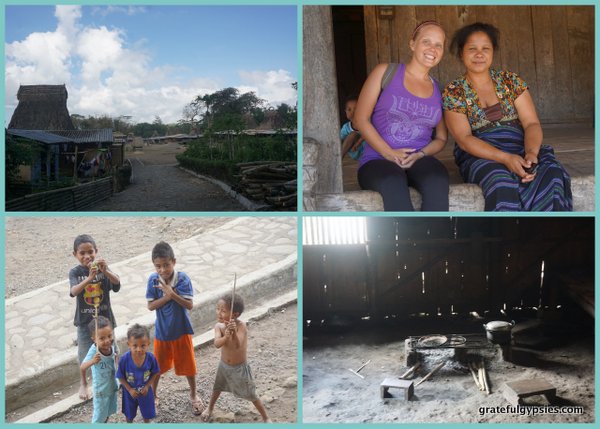
Making new friends.
Thankfully, one local woman spoke excellent English and invited us into her home to tell us all about the village. We met her children and some of the neighbors, who all loved having their photos taken and then laughing at them. She was kind enough to invite us to stay the night, but unfortunately our Flores journey had to roll on.
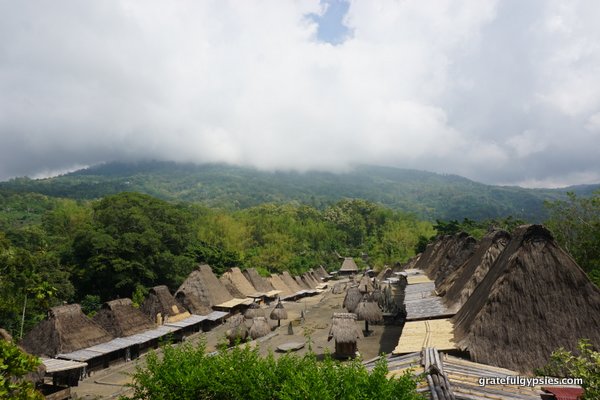
Bena Village
Next up was the incredbily beautiful village of Bena. The village consists of two rows of houses that face each other. In between is an open space filled with shrines and totems.
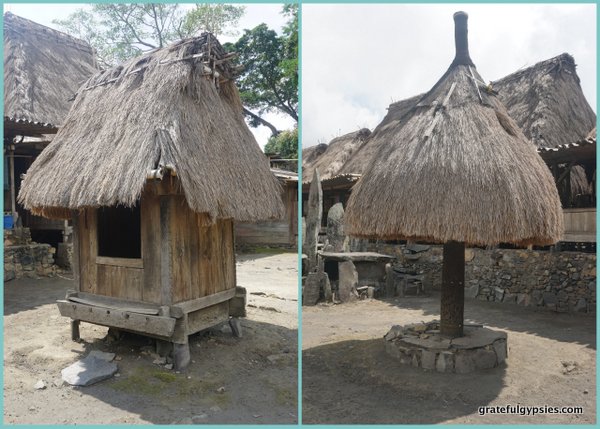
The shrines of Bena.
There are two different types of shrines in the village – ngadhu (symbolizing the male clan ancestors) and bhaga (symbolizing the females).
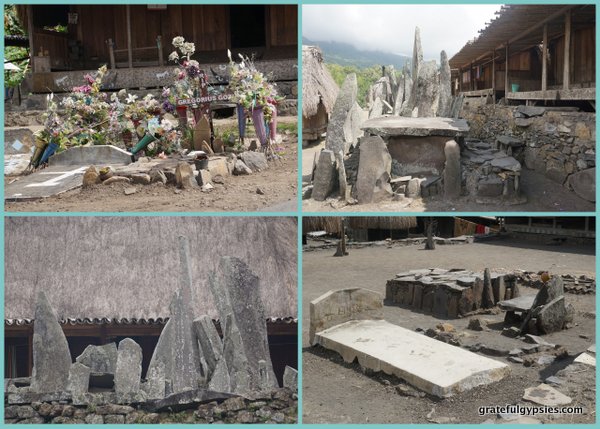
Tombs and stone monoliths.
In the center of the village, you’ll also find some stone platforms which serve as a court where villages can settle disputes. There are also tombs right in front of some of the houses – some people decided to bury their family close to home.
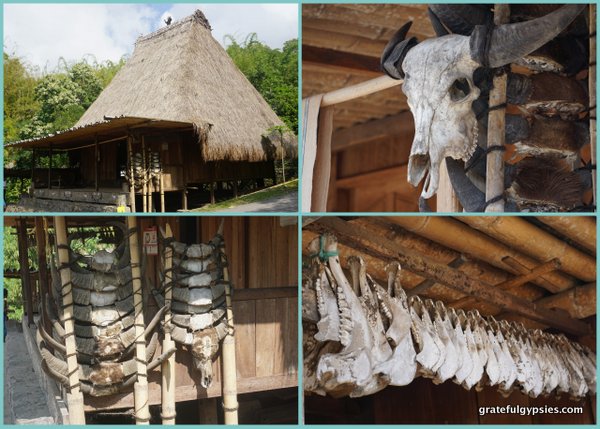
More buffalo horns and pig jaws.
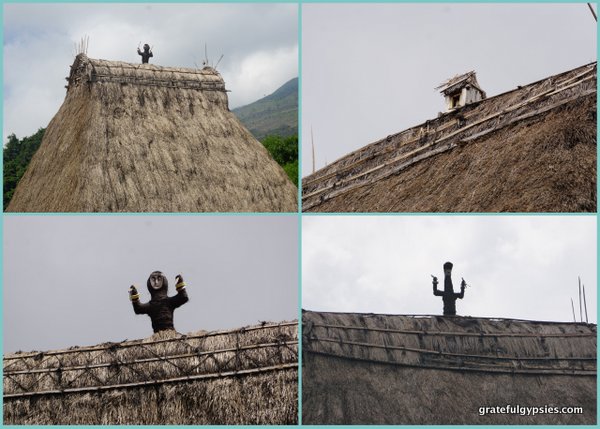
Creepy roof statutes.
Just like the other villages in the area, you’ll see plenty of jaws and horns adorning the walls outside of the houses. Bena is unique from other villages, however, in that it has statues that sit on top of the roof.
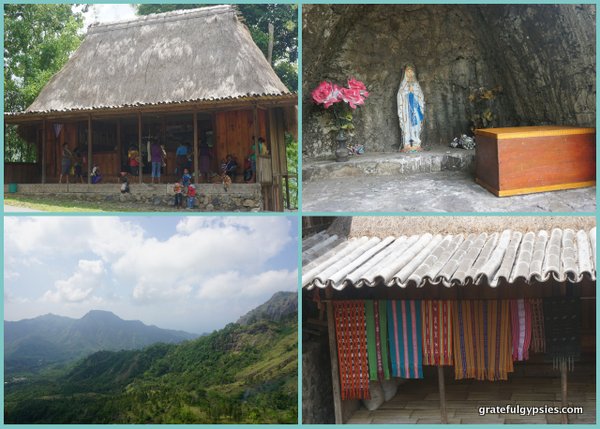
Ikat weaving and Virgin Mary shrine.
The men in the village work the fields, while the women stay home and weave ikat. Finished pieces are displayed in front of houses, so feel free to knock on the door if you’re interested in buying one. At the end of the village, there’s a small hill with a great viewpoint and a shrine to the Virgin Mary.
Hot Springs
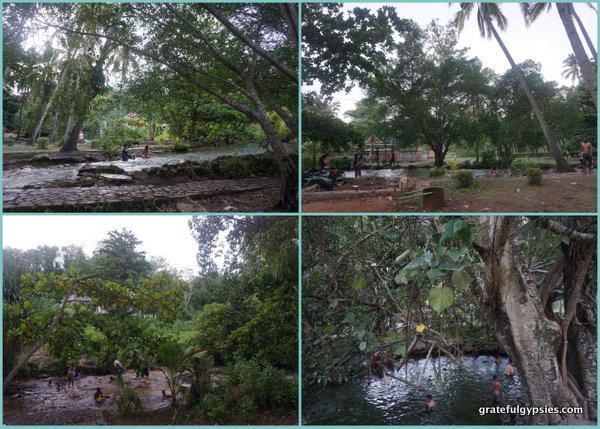
Soaking in the springs.
After exploring a few villages, why not kick back and soak in a natural hot spring? There are a few in the area, but it’s a pretty long and winding road out of town. It’s a popular spot for locals, especially on the weekend. We visited on a Sunday and the place was absolutely packed.
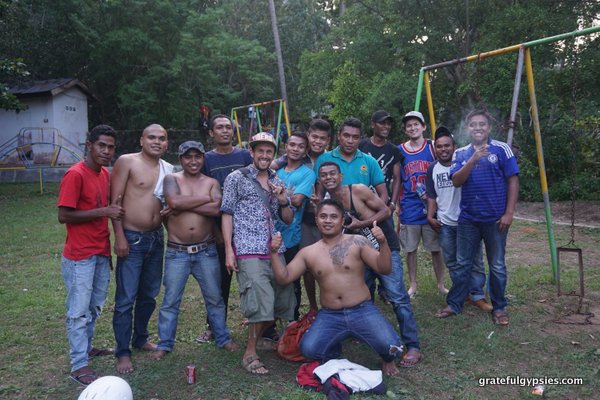
More new friends.
We were instantly befriended by a group of local dudes who were hanging out with a crate of Bintang and a huge bottle full of arak. For the next hour or two, we hung out and talked about our experience in Indonesia, as well as American hip-hop and the NBA. The hospitality of Indonesians always amazes me; it’s never hard to make friends in this great country.
You can easily hit the villages and the hot springs in one day, but if you can add another you could try the hike up Gunung Inerie or visit some waterfalls. One day was enough for us, and we headed out the next morning to Ruteng. Check back for a post about the area’s interesting Hobbit Cave and spiderweb rice fields.

Build vocabulary, practice pronunciation, and more with Transparent Language Online. Available anytime, anywhere, on any device.
About the Author: sasha
Sasha is an English teacher, writer, photographer, and videographer from the great state of Michigan. Upon graduating from Michigan State University, he moved to China and spent 5+ years living, working, studying, and traveling there. He also studied Indonesian Language & Culture in Bali for a year. He and his wife run the travel blog Grateful Gypsies, and they're currently trying the digital nomad lifestyle across Latin America.



